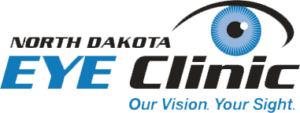Astigmatism occurs when the cornea is shaped more like a football (a steeper curve in one direction than the other) than a perfectly round baseball, and often occurs in combination with myopia (nearsightedness) and hyperopia (farsightedness). This causes light to focus in more than one point on the retina, resulting in blurry and distorted vision. It is a very common type of refractive error in the eye, and not a disease!
Symptoms of astigmatism:
- Blurry, distorted vision at all distances
- Straight lines appear wavy
Causes of astigmatism:
- Heredity
- Long term contact lens wear
- Lid swelling such as caused by a stye
- Corneal scars
- Keratoconus
Diagnosing astigmatism:
Your doctor can conduct a refractive evaluation to determine whether your eyes focus light rays exactly on the retina at distance and near. A visual acuity test will determine your ability to see sharply and clearly at all distances.
Treatment of astigmatism:
Glasses and contact lenses are used by many for the correction of astigmatism. Special toric or astigmatic soft lenses can be used, along with gas permeable hard lenses for higher degrees of astigmatism.
If you are about to undergo cataract surgery, there are several ways to reduce or eliminate your astigmatism. Laser Cataract Surgery provides an precise and accurate method of correcting astigmatism during the procedure. The vast majority of patients having cataract surgery today have measureable amounts of astigmatism, which can distort your vision after cataract surgery if let untreated. And for those patients who have higher amounts of astigmatism that cannot be corrected by our LenSx® laser, we offer the Toric lens implant.
Other types of refractive errors include: nearsightedness, farsightedness and presbyopia.


